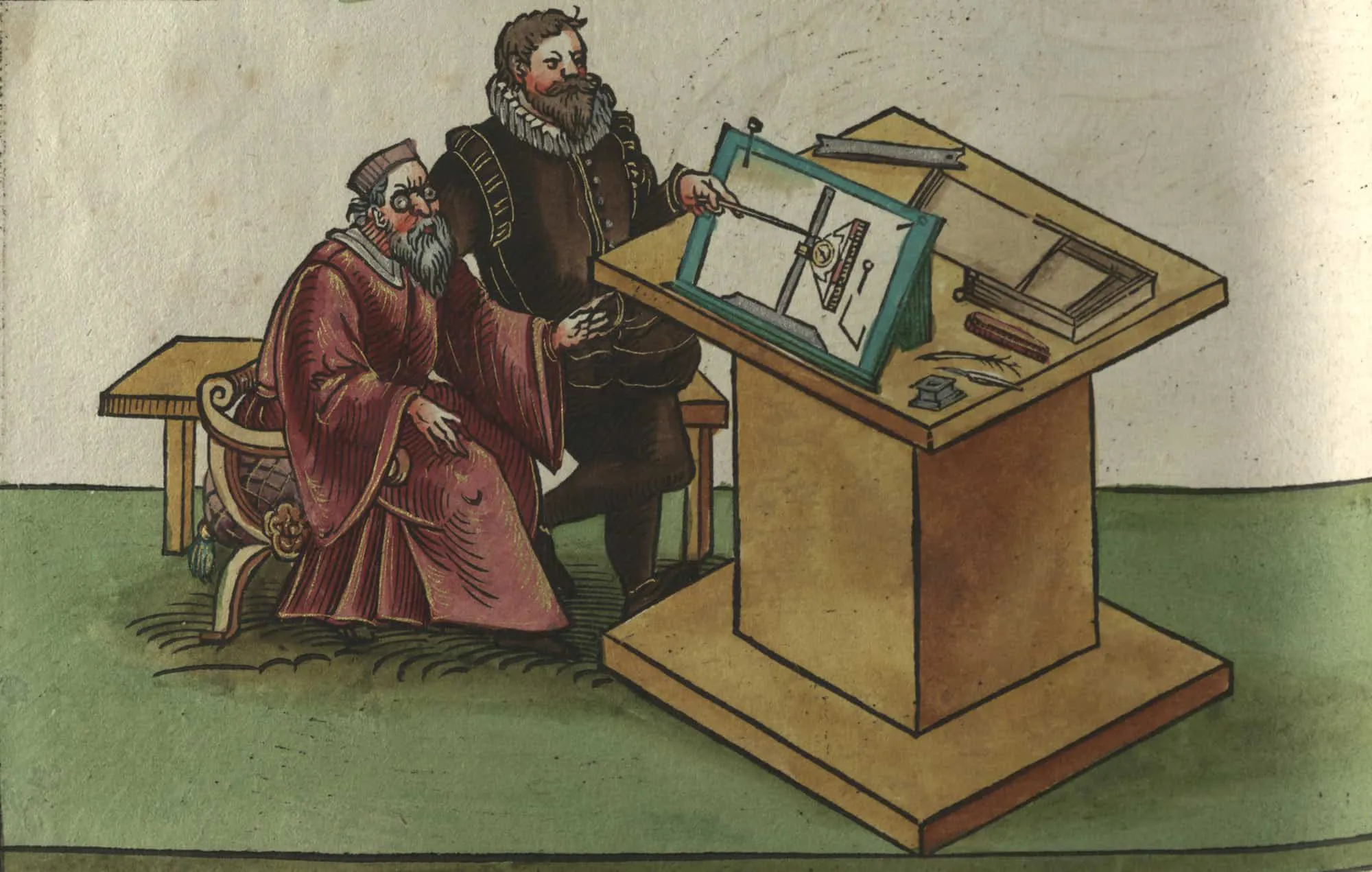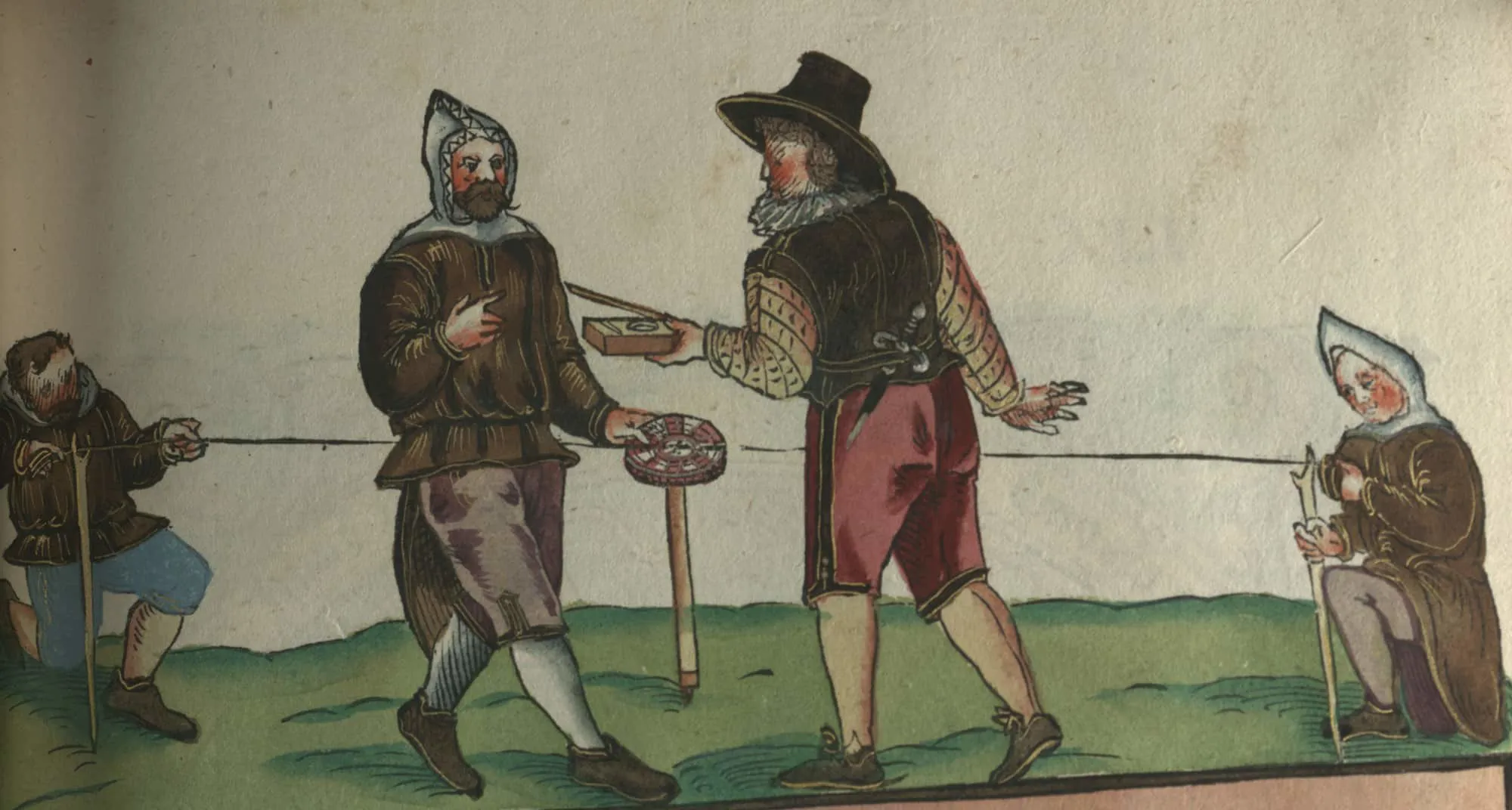Methodus Geometrica
This 16th century early printed, hand coloured treatise on geometry and surveying was published in 1598 in Nuremburg, Germany.
It is 'extremely rare' (according to S.P.Thompson) and thus very little is known about either the history of the work or its author.
However, its detail on surveying methods, instruments and cartographic techniques means that the Methodus Geometrica has an important place in the development of knowledge about surveying through geometry.
In addition, it affords interesting insights into late 16th-century printing, technology, costume and art.
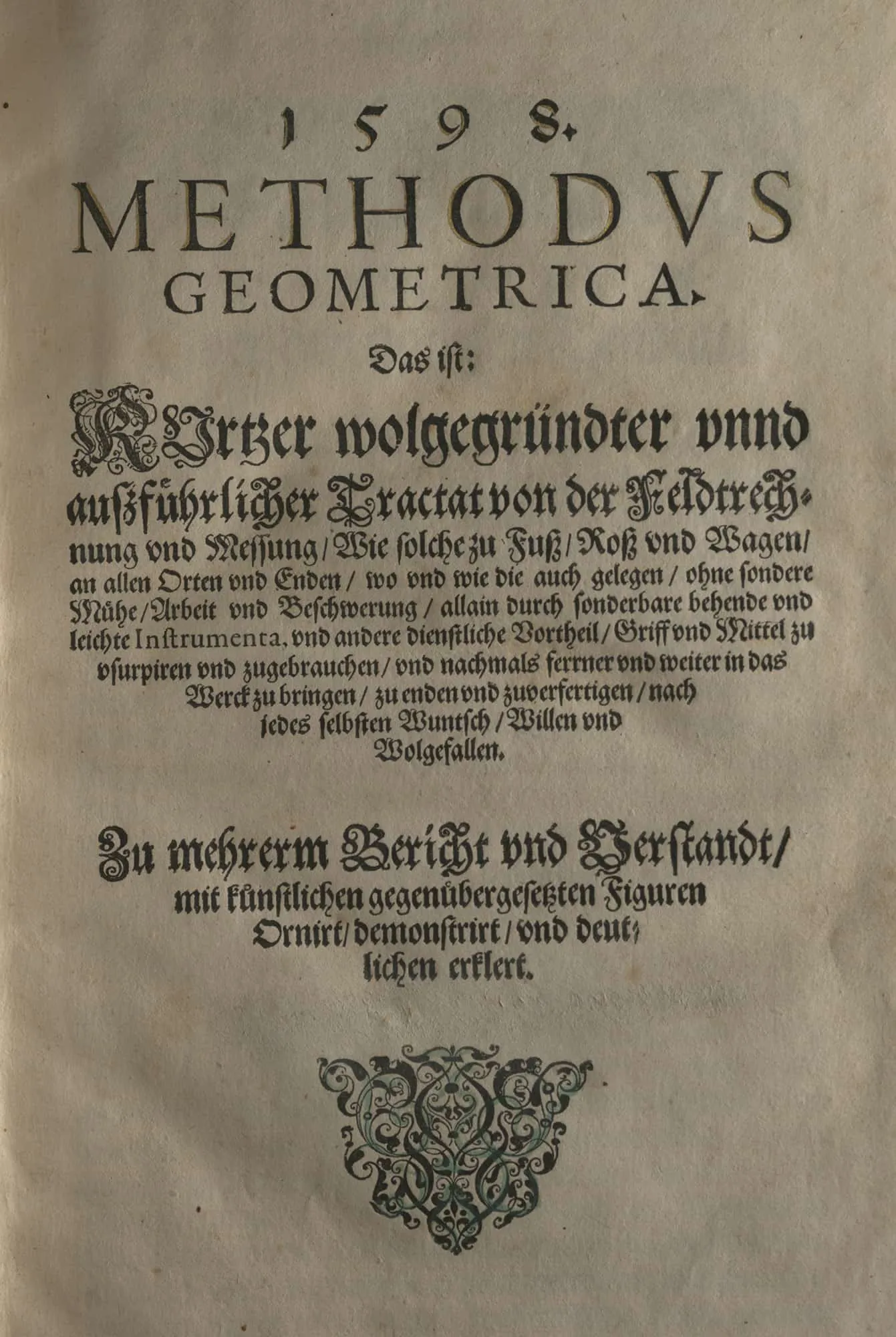
Surveying during the Early Renaissance
The Renaissance in scientific knowledge and, in particular the revival of interest in Greek mathematics, provided the intellectual foundation for the development of modern surveying.
This knowledge, including geometry, became more readily available as texts were translated from Latin and printing became more common.
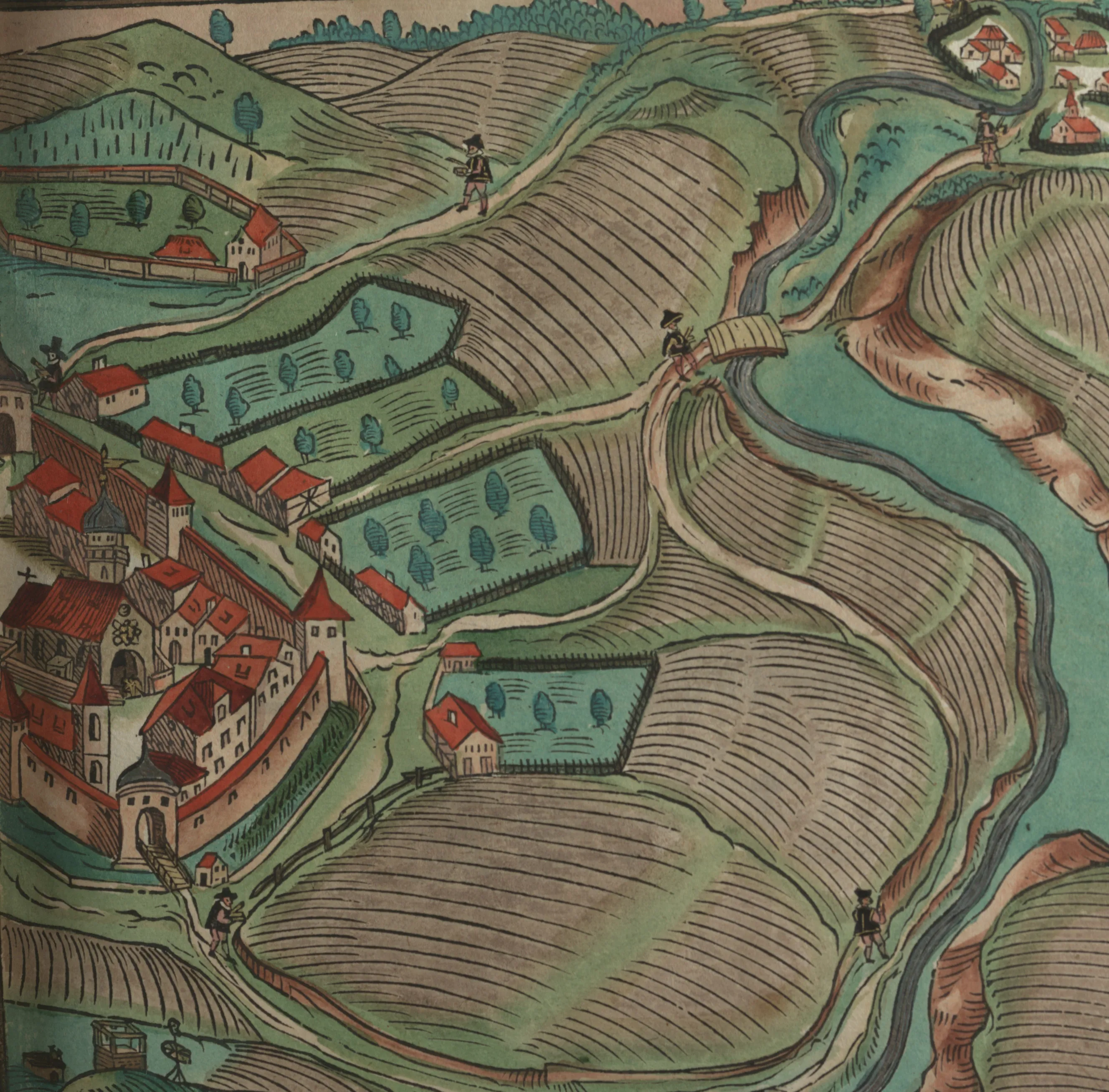
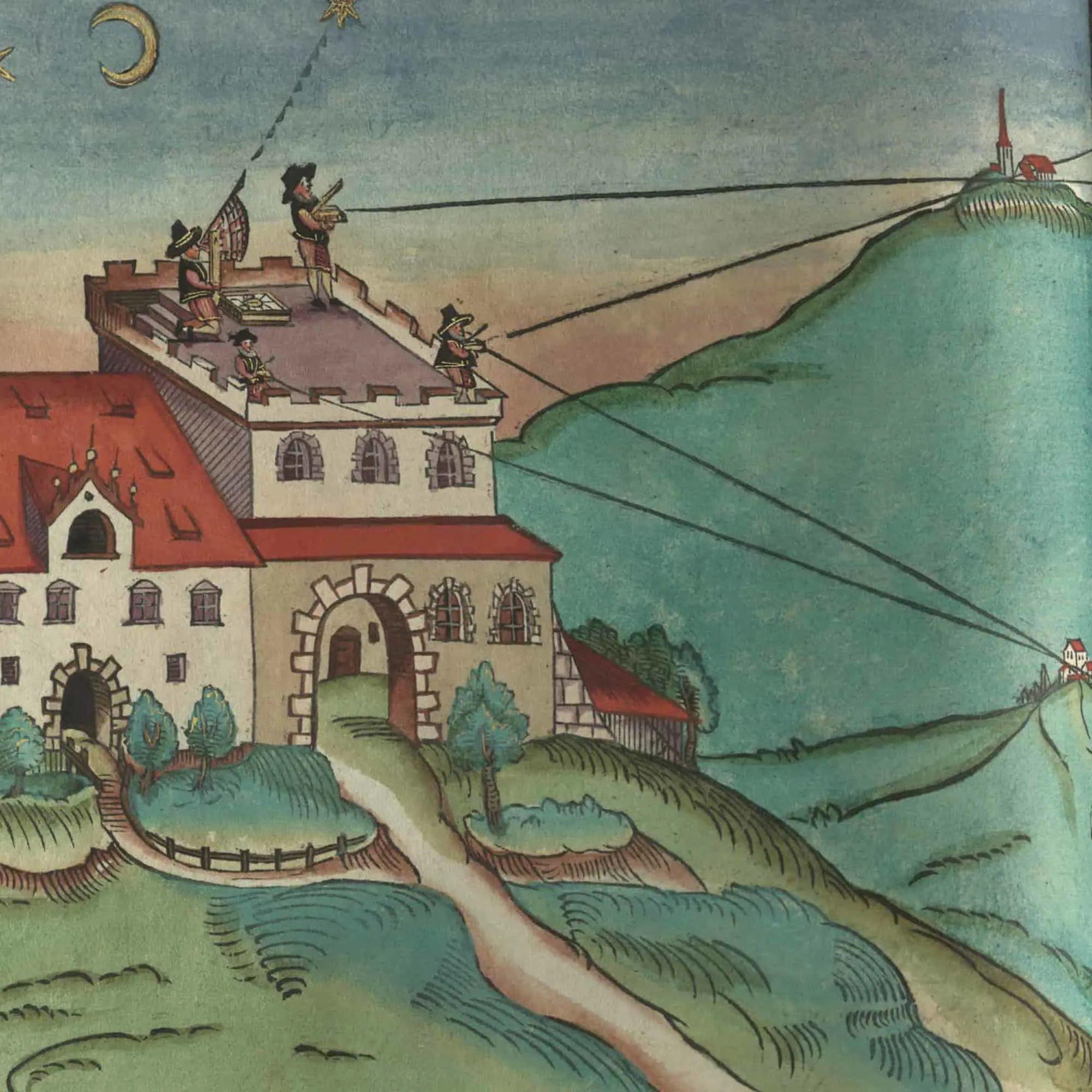
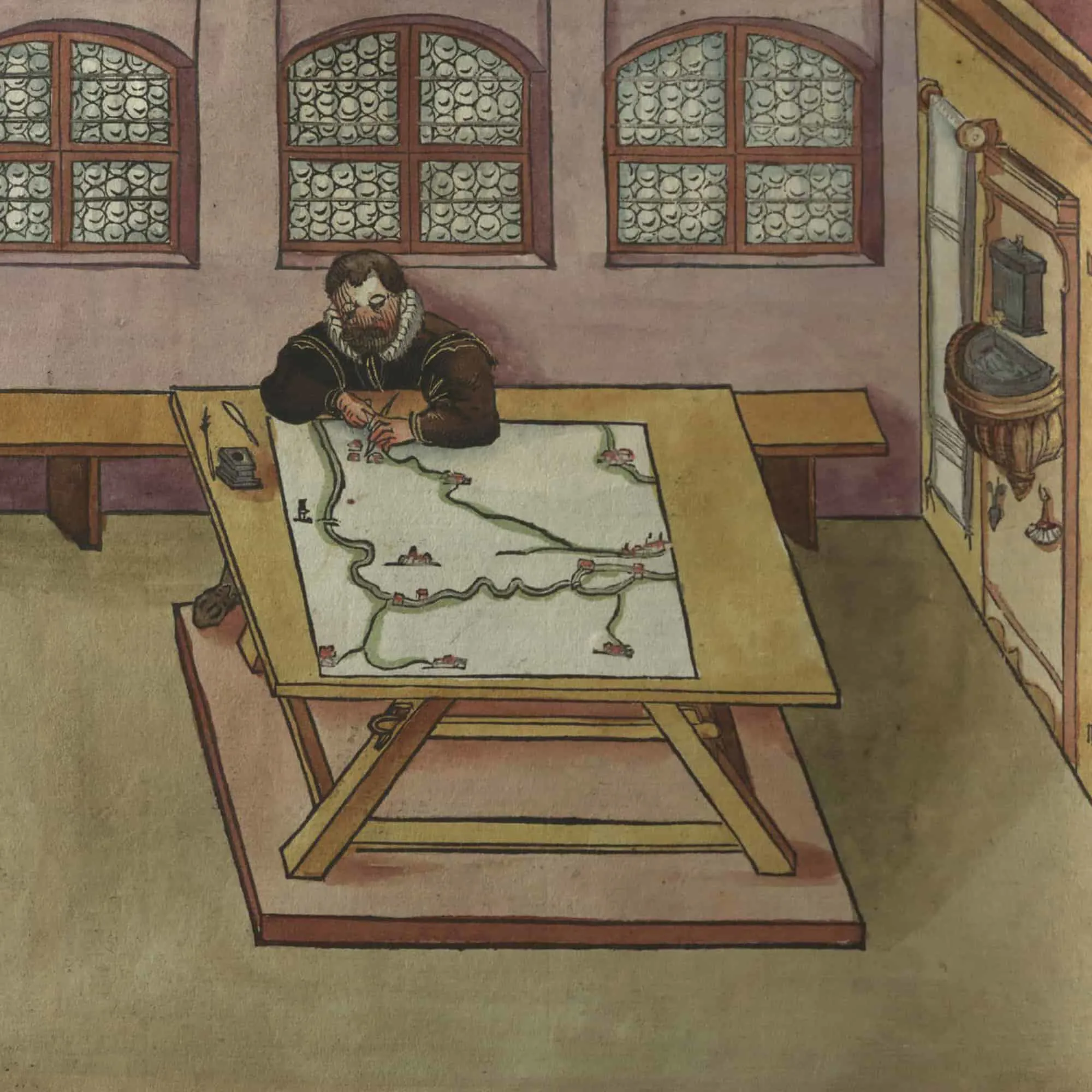
Traditionally, the principle role of the surveyor was to determine the obligations and rights of the tenants the estate and administer the recording of their agricultural production. The aforementioned developments of the renaissance however, saw this function become subservient to the role of the modern surveyor as one concerned with the location and measurement of plots of land and its features.
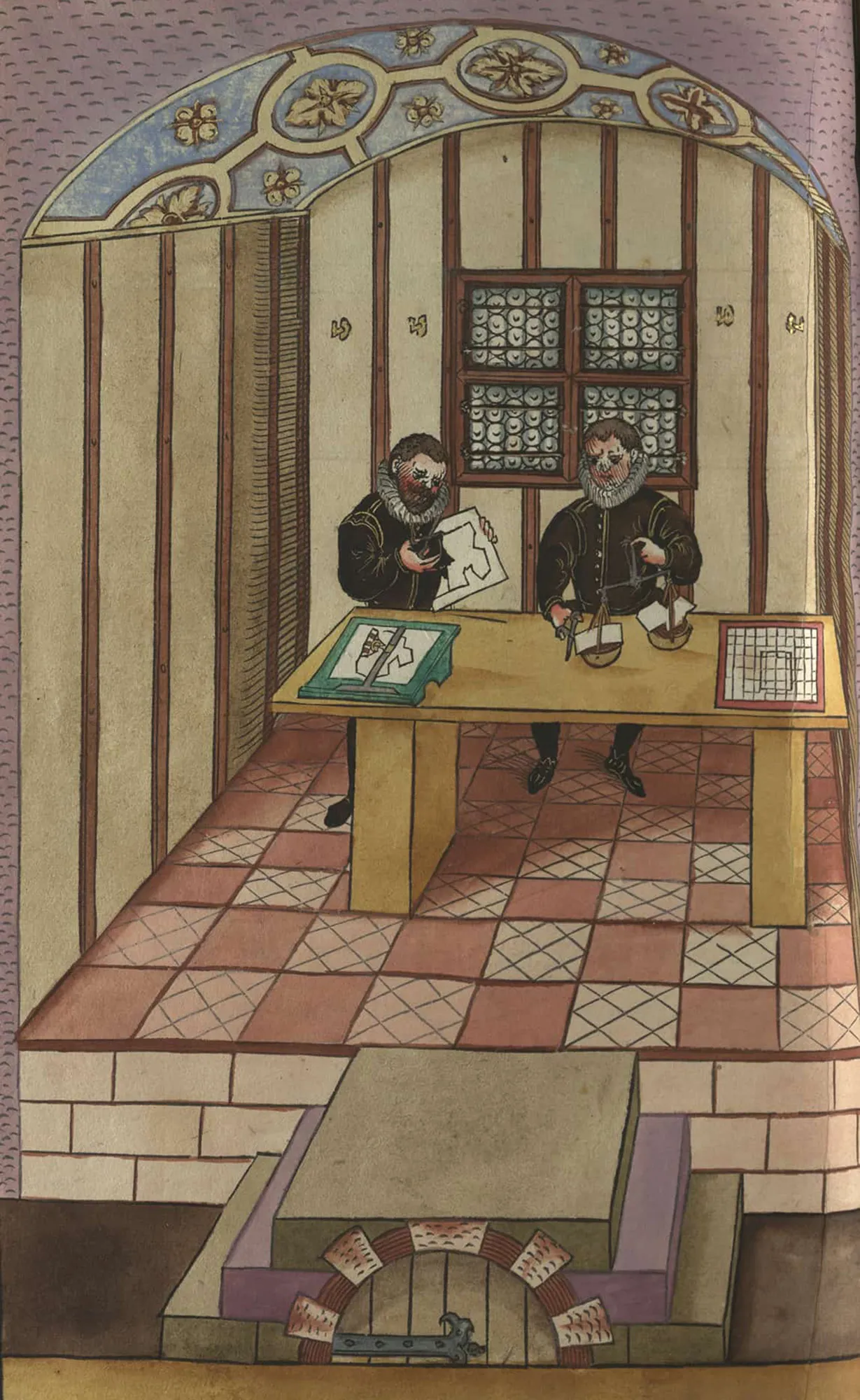
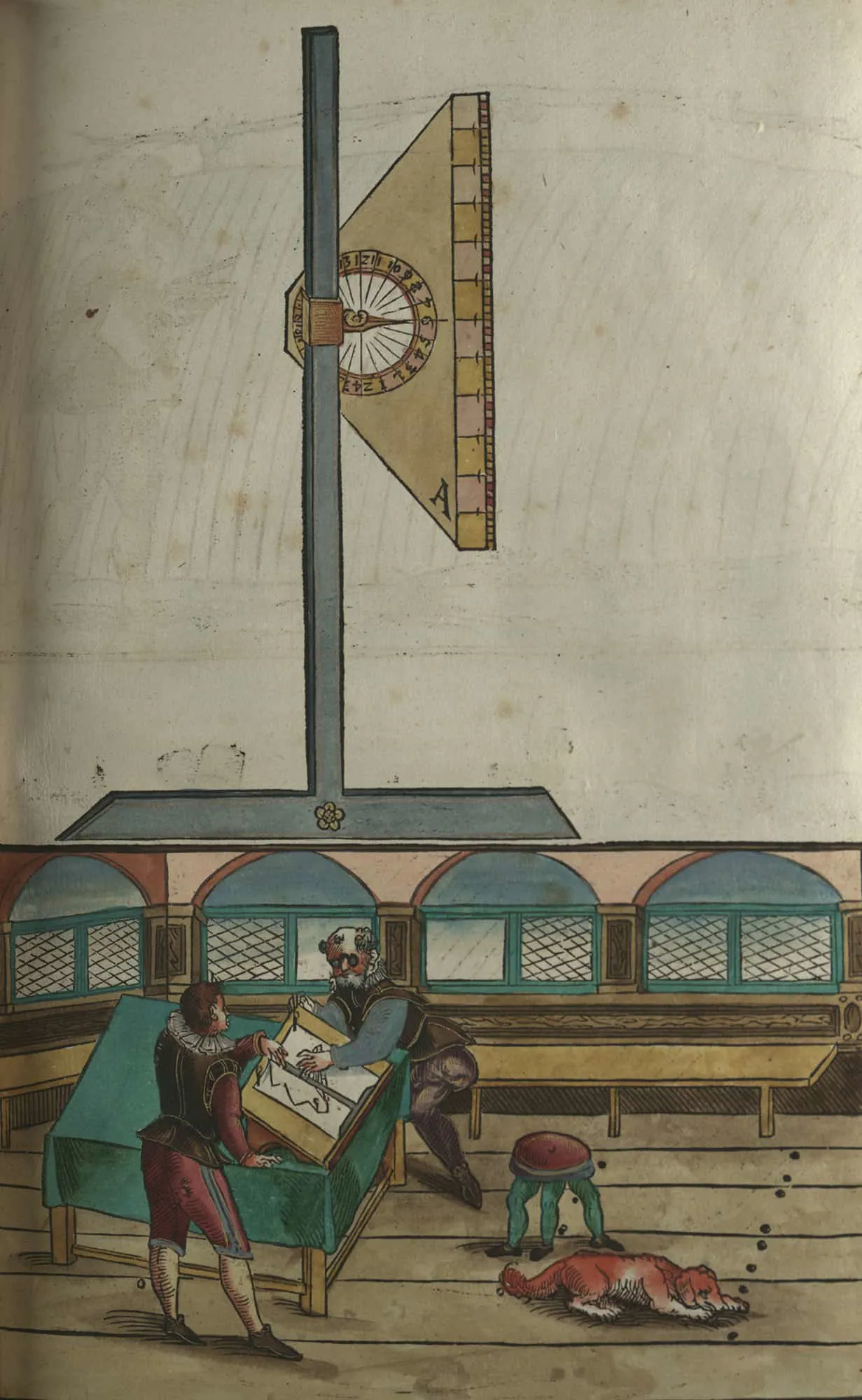
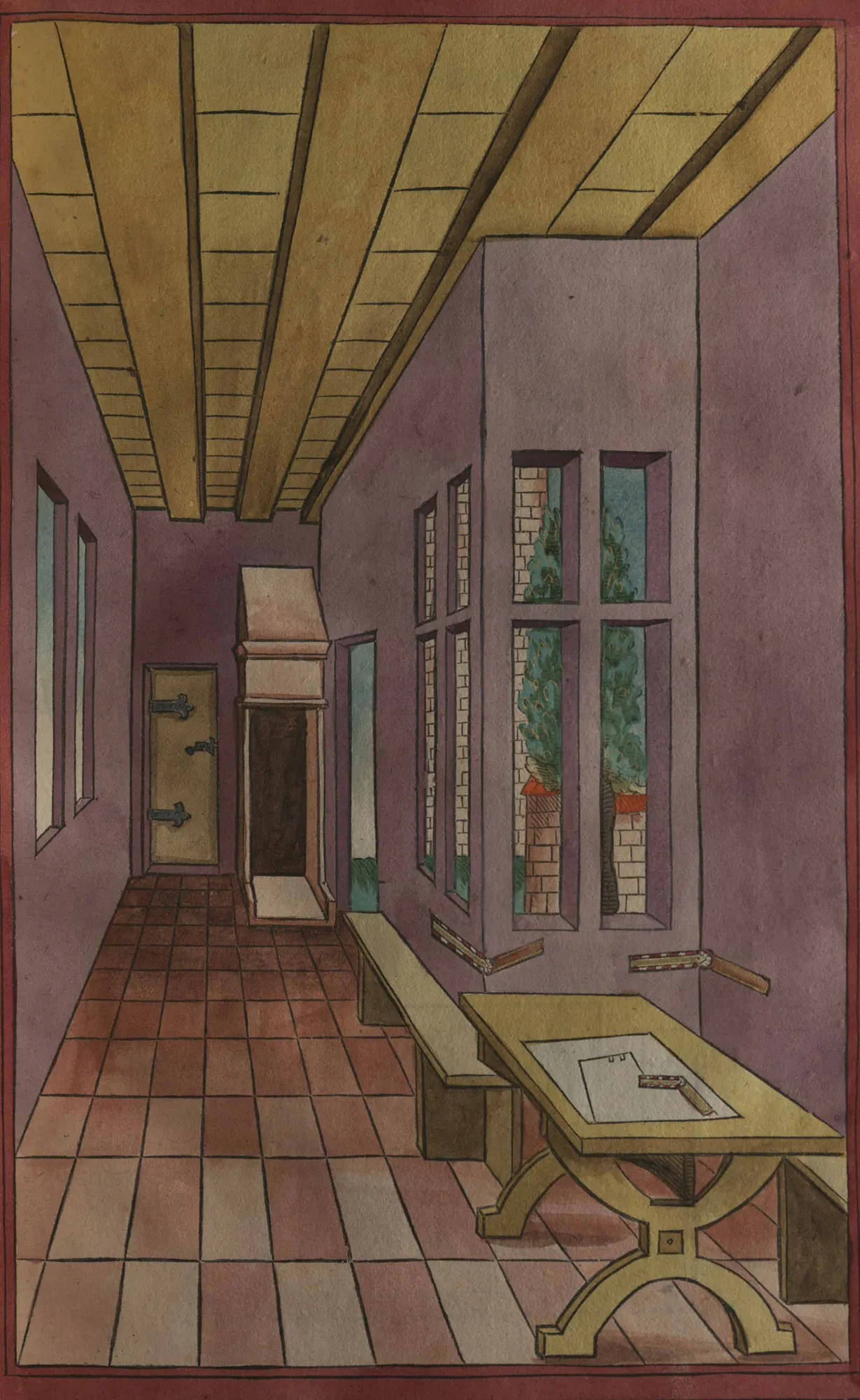
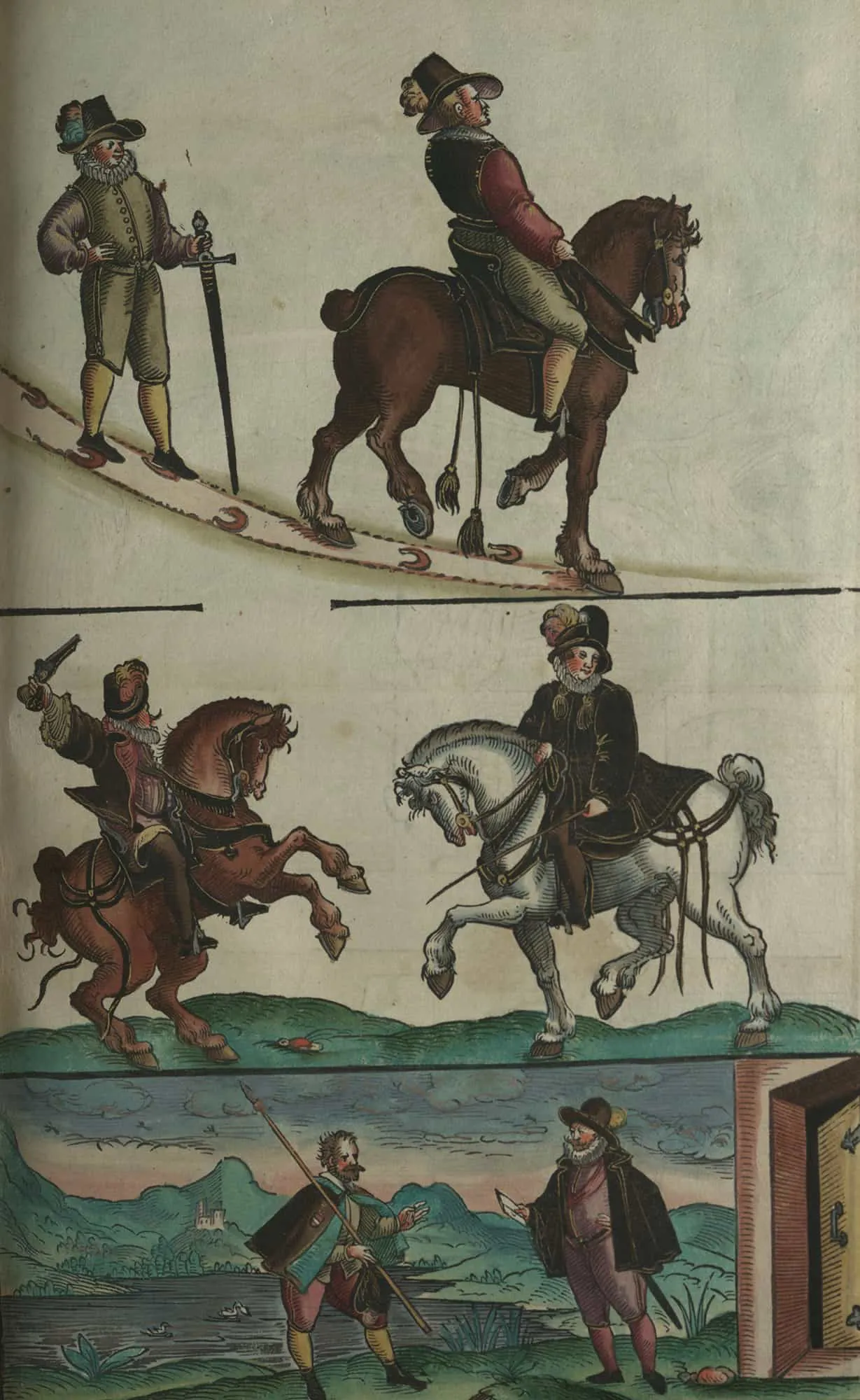
The introduction, by Frisius in 1533, of the triangulation method using trigonometry and a greater understanding of geometry and proportion made surveying far more accurate.
Historically, the Egyptians, Babylonians, Greeks and then the Arabs and Muslims employed Pythagorean and later Euclidian geometry to divide and map plots of land. However, pursuit of these pure sciences fell away, in the West, with the spread of Christianity, until The Renaissance.
